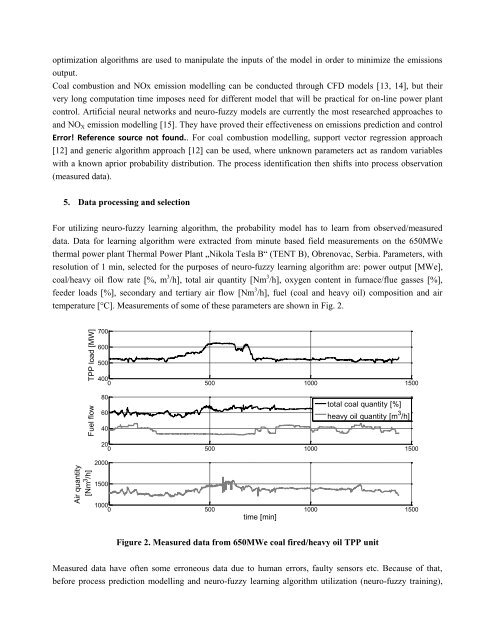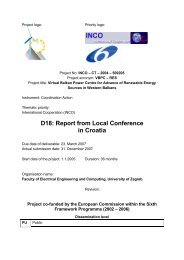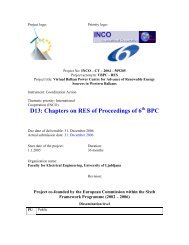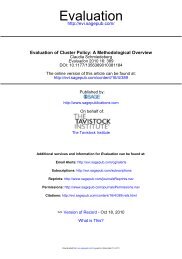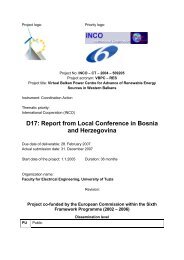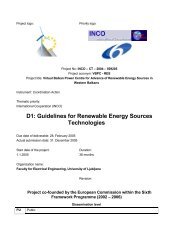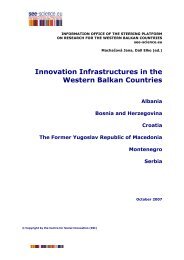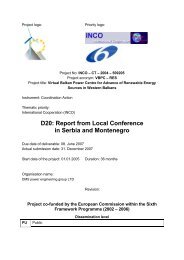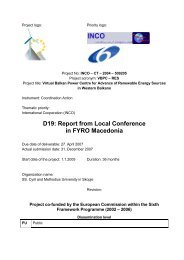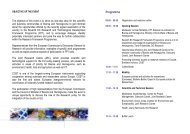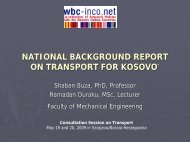Improvement of Environmental Aspects of Thermal Power Plant ...
Improvement of Environmental Aspects of Thermal Power Plant ...
Improvement of Environmental Aspects of Thermal Power Plant ...
You also want an ePaper? Increase the reach of your titles
YUMPU automatically turns print PDFs into web optimized ePapers that Google loves.
optimization algorithms are used to manipulate the inputs <strong>of</strong> the model in order to minimize the emissions<br />
output.<br />
Coal combustion and NOx emission modelling can be conducted through CFD models [13, 14], but their<br />
very long computation time imposes need for different model that will be practical for on-line power plant<br />
control. Artificial neural networks and neuro-fuzzy models are currently the most researched approaches to<br />
and NOX emission modelling [15]. They have proved their effectiveness on emissions prediction and control<br />
Error! Reference source not found.. For coal combustion modelling, support vector regression approach<br />
[12] and generic algorithm approach [12] can be used, where unknown parameters act as random variables<br />
with a known aprior probability distribution. The process identification then shifts into process observation<br />
(measured data).<br />
5. Data processing and selection<br />
For utilizing neuro-fuzzy learning algorithm, the probability model has to learn from observed/measured<br />
data. Data for learning algorithm were extracted from minute based field measurements on the 650MWe<br />
thermal power plant <strong>Thermal</strong> <strong>Power</strong> <strong>Plant</strong> „Nikola Tesla B“ (TENT B), Obrenovac, Serbia. Parameters, with<br />
resolution <strong>of</strong> 1 min, selected for the purposes <strong>of</strong> neuro-fuzzy learning algorithm are: power output [MWe],<br />
coal/heavy oil flow rate [%, m 3 /h], total air quantity [Nm 3 /h], oxygen content in furnace/flue gasses [%],<br />
feeder loads [%], secondary and tertiary air flow [Nm 3 /h], fuel (coal and heavy oil) composition and air<br />
temperature [°C]. Measurements <strong>of</strong> some <strong>of</strong> these parameters are shown in Fig. 2.<br />
Air quantity<br />
[Nm 3 /h]<br />
Fuel flow<br />
TPP load [MW]<br />
700<br />
600<br />
500<br />
400<br />
0 500 1000 1500<br />
80<br />
60<br />
40<br />
20<br />
0 500 1000 1500<br />
2000<br />
1500<br />
total coal quantity [%]<br />
heavy oil quantity [m 3 /h]<br />
1000<br />
0 500 1000 1500<br />
time [min]<br />
Figure 2. Measured data from 650MWe coal fired/heavy oil TPP unit<br />
Measured data have <strong>of</strong>ten some erroneous data due to human errors, faulty sensors etc. Because <strong>of</strong> that,<br />
before process prediction modelling and neuro-fuzzy learning algorithm utilization (neuro-fuzzy training),


